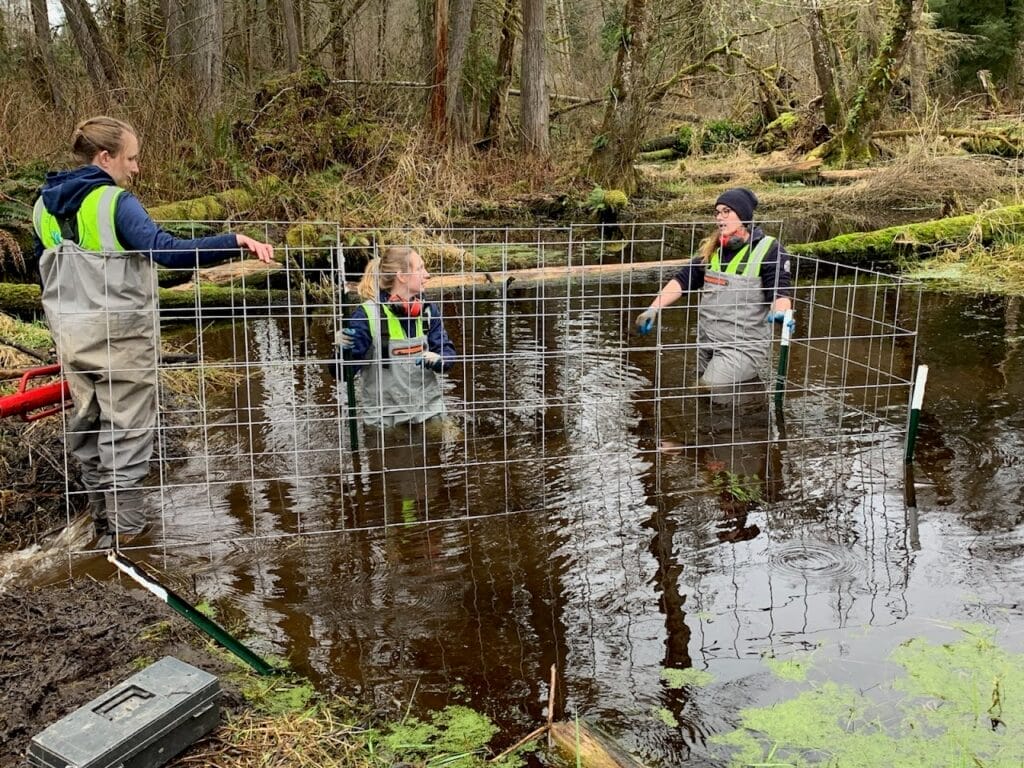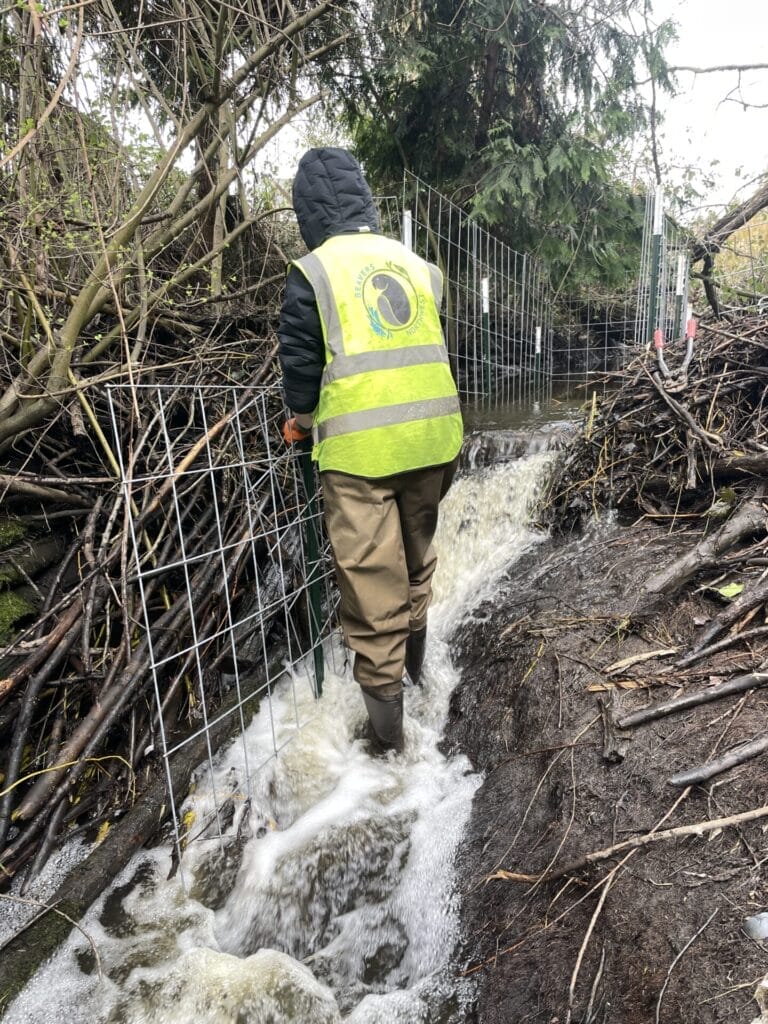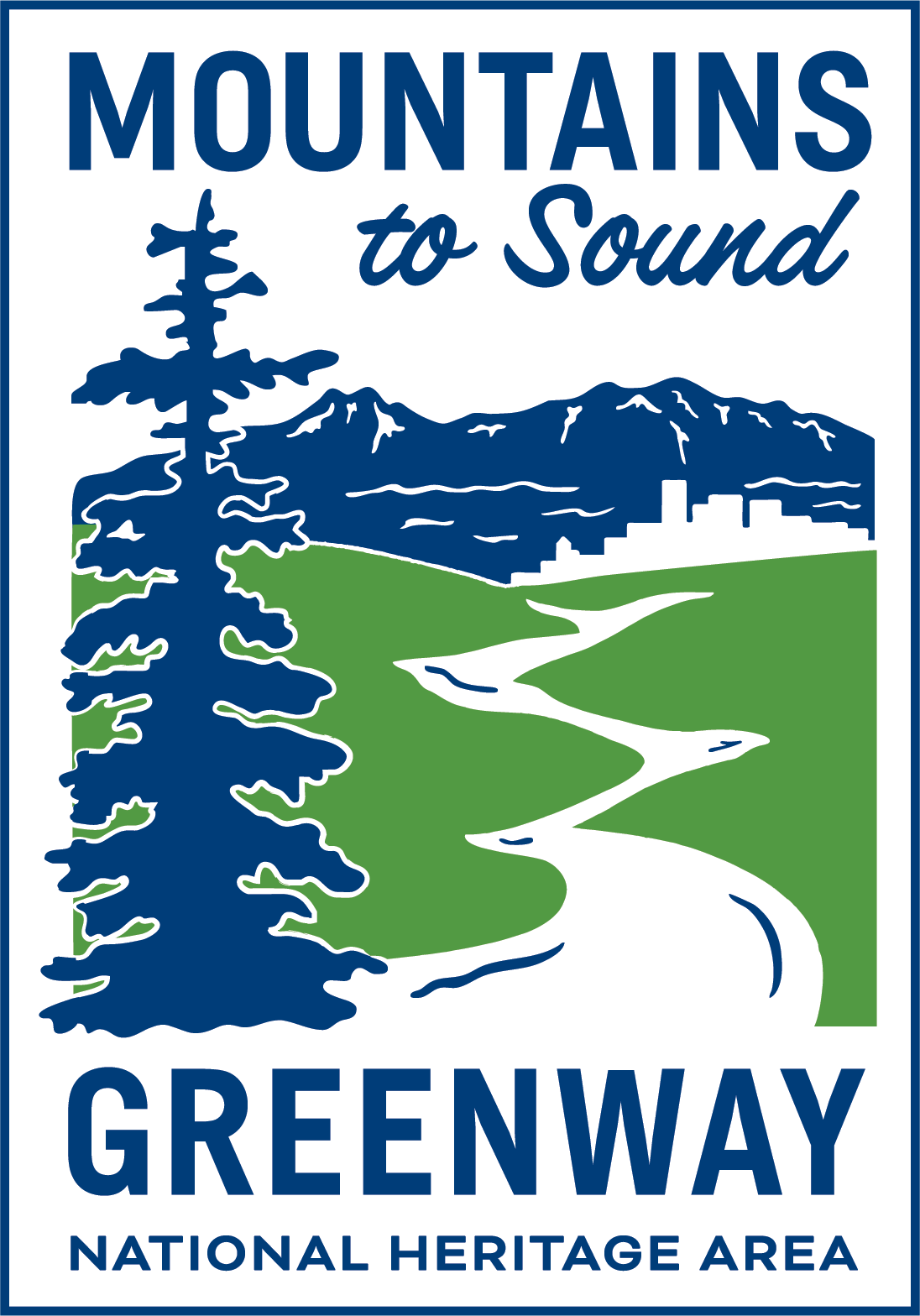How To Coexist with Beavers: A Q&A With Beavers Northwest
After almost going extinct, beaver populations are rebounding within the Pacific Northwest —their return brings a form of natural habitat engineering that enriches ecosystems and raises questions about how they might impact our waterways. From conservationists working to rehabilitate habitats with the same woody materials that are attractive to beavers, to homeowners worried about flooding, many are wondering how humans can co-exist with an animal that can drastically alter the shape of wetlands.
Beavers Northwest is an organization dedicated to increasing acceptance and understanding of native beavers to support healthier and more resilient ecosystems. Through education and technical assistance, the organization helps landowners, restoration experts, and anyone interested in beaver coexistence to strike a balance between human and beaver needs. With a shared mission of addressing the needs of people and nature, the Mountains to Sound Greenway Trust and Beavers Northwest has decided to work together to bring beaver coexistence to a wider audience, including Greenway Trust conservation experts who are learning how to restore habitats with beavers in mind.
Since these habitat engineers have been absent from wetlands for decades, Beavers Northwest has hosted several events to bring awareness to the hotspots of biodiversity they create and the ways they benefit both wildlife and people. They also work to help put boundaries around beavers’ handiwork so that landowners and restoration experts like those at Greenway Trust, and throughout the conservation world, have options in working with beavers to enhance landscapes.
Beaver engineering pose real challenges that go beyond thwarting restoration experts’ plans, they can also endanger infrastructure, damage or take down large trees, and cause flooding. These are scary outcomes that would naturally lead people to remove beavers from the area they inhabit—but there is another way. Beavers Northwest designs and implements non-lethal solutions, such as flow devices to redirect water and fencing that protects trees, to mitigate harm in these conflicts.
In the summer of 2024, the Greenway Trust collaborated with Beavers Northwest Executive Director Elyssa Kerr to create a Beavers Walk event where participants learned about the strange and fascinating world of these large rodents. It is at these events that Elyssa meets misconception and valid fears about beavers with facts, so that people can better understand that keeping beavers in habitats has benefits for the wider ecosystem. Through education, more people can understand that beaver dams build rich streams and rivers that provide refuge for macroinvertebrates, birds, and salmon by slowing water down and creating more nutrient-dense conditions. They can even become partners in restoration projects that target highly degraded waterways that have been changed by human presence.

Elyssa Kerr – Executive Director of Beavers Northwest
To help us all learn more about damming, their impacts on salmon habitat, and the animals at the center of it all, we sat down with Elyssa Kerr to learn the merits of coexistence with nature’s ecosystem engineers. Elyssa is passionate about exploring and maintaining the amazing habitats that beavers create and enjoys sharing the benefits of these ecosystems with people of all ages through interactive and experiential programming. She has installed many beaver management devices throughout the region and has assisted with implementing similar programs across the Western United States.
Q: What should the public and land managers know about coexisting with beavers, especially as we try to balance nature and urban development?
A: The biggest thing to know is that beaver coexistence is possible. There are tools out there to help us compromise with beavers. We can find a space that maybe beavers can have a little bit of ponding, build a little bit of that resilience, but we can put bounds on it so that our infrastructure is not impacted.
Q: When we think about coexistence, we can look to the relationship between beavers and salmon. Can you explain how they benefit each other?
A: Beavers slow down water, which is essential for migrating salmon. Adult salmon need places to rest as they head upstream, and juvenile salmon need refugia as they migrate back to the ocean. Beaver ponds are ideal habitats for coho salmon, where they can rest, eat bugs, and grow before heading to the ocean. Beavers also improve water quality and cool water temperatures, benefiting salmon indirectly.

Q: What challenges do beavers pose to humans, and how can we address them, especially in restoration projects?
A: Beavers work on natural process timescales, which are more dynamic and complex than human-set systems. This creates conflicts in urban and suburban spaces where infrastructure wasn’t designed with beavers in mind. The challenge is finding ways to allow some natural processes while managing negative impacts. Restoration projects should anticipate beavers moving in and plan for coexistence.
Q: What would you say to someone whose home or business is compromised by beaver activity?
A: Beavers Northwest is here as a resource. We have a lot of experience with the tools that can help compromise with beavers. It can be scary to deal with flooding but knowing there are options can make it manageable. The biggest step is to reach out. We can direct people to resources even if they’re not in the Puget Sound region.
Q: How can people get involved with beavers and promote coexistence?
A: On our website, we have a Seattle neighborhood beaver map featuring local beaver neighbors. You can also volunteer with us for outreach events or with water quality testing. There are also many resources to learn more about beavers and spread awareness in your community through Beavers Northwest. The more people understand that coexistence is possible, the more normalized it will become.
Q: What is the strangest thing you know about beavers that most people don’t know?
A: Beavers practice coprophagy, which means they eat their own poop. Many herbivores do this to digest hard-to-process materials like woody vegetation. Since that poop still has good nutrients in it, it’s worth giving it a taste if you’re a beaver.
Sign up for our newsletter to get connected to educational stories like this and future events!





